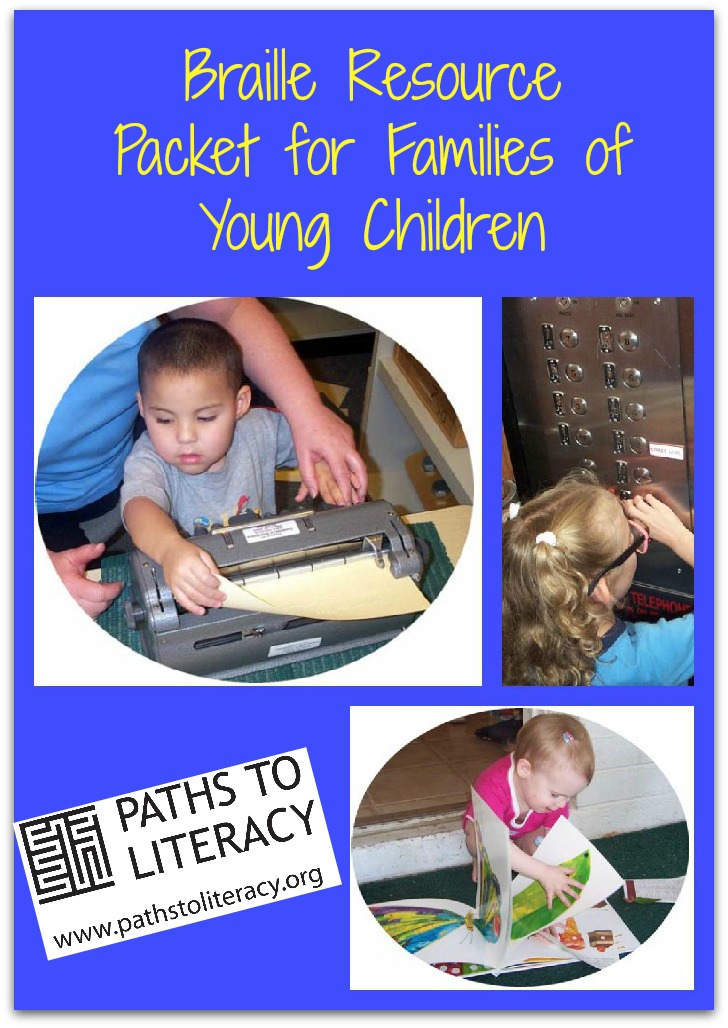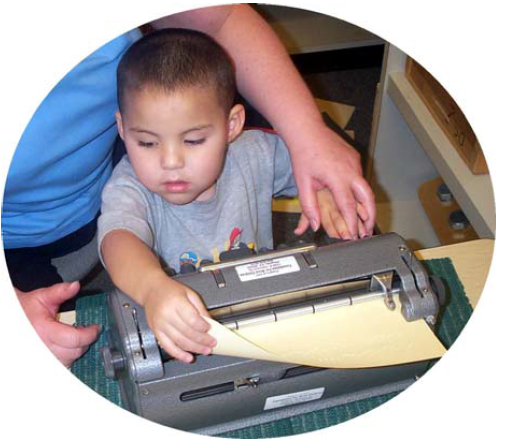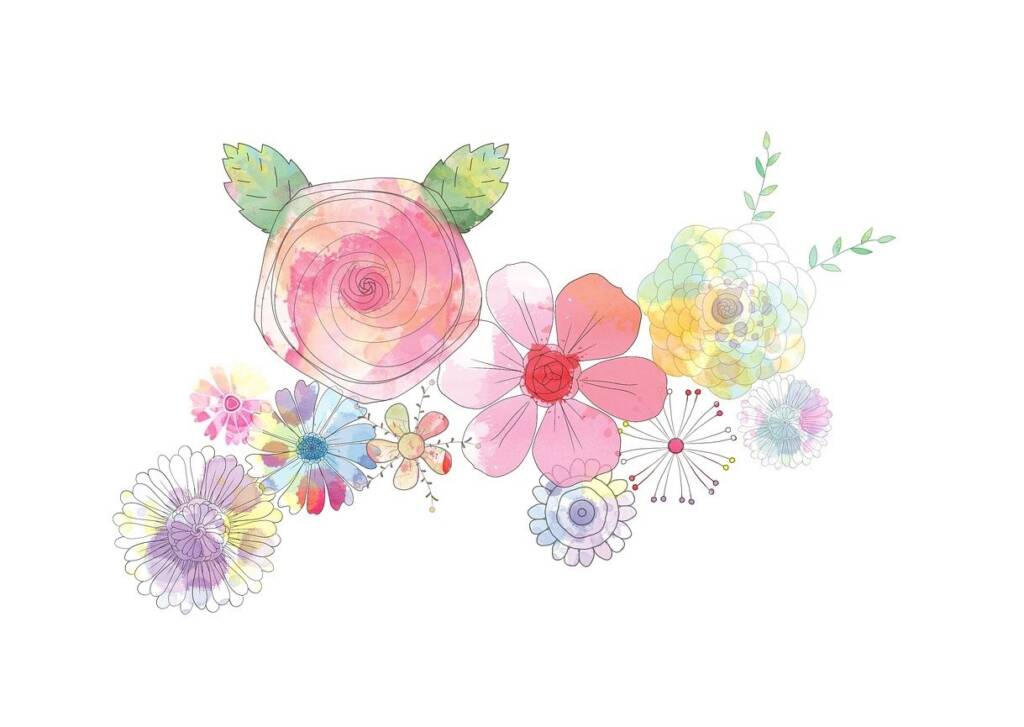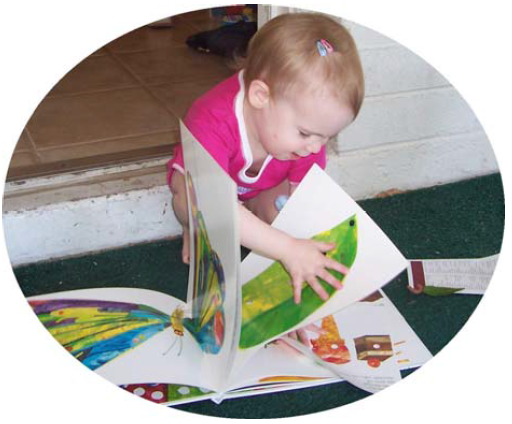 I am often asked for information about how to support the development of braille skills and braille literacy at home and I put together a packet for a conference a few years ago with some of my favorite resources. The packet, which can be downloaded HERE, includes the following:
I am often asked for information about how to support the development of braille skills and braille literacy at home and I put together a packet for a conference a few years ago with some of my favorite resources. The packet, which can be downloaded HERE, includes the following:
- Braille for My Baby: Six Things You Can Do at Home for Your Young Blind Child by Graciela Tiscareño-Sato
- Sample Menu of Weekly Family Literacy Events
- Print-Braille Books for Young Children by Sheila Amato and Ellen Trief
- Creating and Using Tactile Experience Books for Young Children with Visual Impairments by Sandra Lewis and Joan Tolla
- Ideas to Promote Braille Awareness and Literacy
- Beginning Braille Competencies
- Interventions to Facilitate Emergent Literacy
- Braille Alphabet and Braille Alphabet Blank to Color In
- Dots for Families
- Resource List for Early Braille Literacy Materials
Ideas to Promote Braille Awareness and Literacy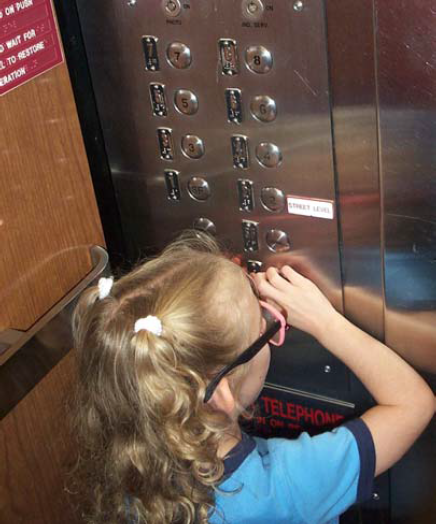
Children need to be exposed to braille in a functional and fun way. Here are just a few ideas…
- Parents and teachers should share what they are writing (e.g., grocery list, note home) and read aloud as they do so. Let children know how and why you use print (or braille).
- Provide the child with lots of activities to use the hands and build tactile awareness and strength (e.g., play dough, shaving cream, opening jar lids, playing a keyboard).
- Braille notes for the child and “hide” in lunchbox, desk, etc. for the child to find and “read” (include print on the note so the child can get assistance in “reading” the note).
- Provide braille writer and a slate and stylus for the child to experiment with and write notes with. Don’t worry about mechanics or true reading…these will come later.
- Point out braille in the community (e.g., elevators, signs) and ask for braille menus in restaurants (When appropriate, have the child do the asking!).
- Label things that are important to the child (e.g., cubby in classroom, book covers, food containers).
- Make experience books with the child using activities and materials that are meaningful to him/her (e.g., bath time, trip to Grandma’s, going to the park).
- Make sure the child has access to books – place on a low shelf. Label books for the child so he/she can identify the book sought.
- Make story boxes for favorite commercial books (a box or bag of materials that correspond to the story) and spend time sharing the materials as you read the book to the child.
- Take the child to the public library for “story hour”. Many libraries use a variety of hands-on materials during story hour and most librarians are glad to work with parents to meet the challenge of a tactile learner!
- Use the plastic sheets that come with bacon to write braille on for books.
L. Penny Rosenblum, Ph.D., June 18, 2005, Western Regional Early Intervention Conference
Click here to download as .pdf
Beginning Braille Competencies
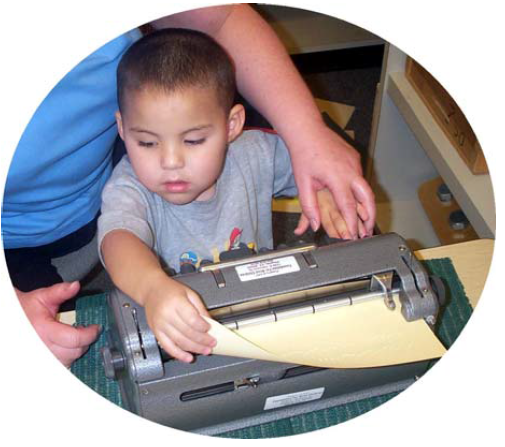 The following competencies do not have to be accomplished before kindergarten. Each child is unique in his development and readiness level. Literacy skills will progress according to a child’s language development, concept formation, interest-motivation, and fine motor discrimination abilities. The braille reading/writing skills that he or she learns will provide the added exposure that many sighted children possess upon entering kindergarten. More specifically, the young student will have the opportunity to use braille-producing tools and begin processing the complexities of the braille code prior to kindergarten.
The following competencies do not have to be accomplished before kindergarten. Each child is unique in his development and readiness level. Literacy skills will progress according to a child’s language development, concept formation, interest-motivation, and fine motor discrimination abilities. The braille reading/writing skills that he or she learns will provide the added exposure that many sighted children possess upon entering kindergarten. More specifically, the young student will have the opportunity to use braille-producing tools and begin processing the complexities of the braille code prior to kindergarten.
The following competencies are not in sequential order. A certified teacher of students with visual impairments will determine the sequence and combination of instructional skills necessary for each student’s optimal progress.
1. Tracks smoothly across three to eight lines of double spaced braille.
2. Finds beginning and end of a braille line.
3. Locates long and short horizontal and vertical braille lines.
4. Locates braille symbol that is different in a line of braille.
5. Locates braille symbol that is the same in a line of braille.
6. Discriminates two braille symbols to determine if they are the same or different.
7. Matches and sorts braille symbols (letters, numbers, whole word contractions).
8. Demonstrates organization of braille cell using a variety of materials (golf balls, marbles, pegs.)
a. Copying six piece configuration
b. Copying by demonstrating “dot” system
9. Transfers skill #8 to the six keys on the braille writer.
10. Pushes each key separately and in combination with other keys.
11. Reads and writes numbers 0 – 10 in braille using number sign.
12. Reads and writes some letters of the alphabet in braille.
13 Reads and writes simple whole word contractions (go, like).
14. Reads and writes first and last name.
15. Discriminates own name from other dissimilar names in braille.
16. Attempts to “read” or follow along when an adult reads a print/braille book.
17. Inserts and removes paper in braille writer.
18. Locates all parts of the braille writer when named.
19. Demonstrates use of all parts of braille writer when asked.
20. Locates, removes and replaces push pin in cork board to complete teacher directed task.
a. Uses pencil/crayon to mark correct response.
21. Moves beads on abacus for counting purposes.
22. Dictates and co-actively writes simple language experience phrases for developing a book or weekly news notes.
23. Rhymes words for building simple word families.
24. Sorts tactual objects according to their beginning sounds.
25. Begins Patterns pre-primer.
26. Begins Mangold program.
27. “Scribble writes” using a slate and stylus.
28. Exposed to technology.
Newbold, S. (2000). Emergent literacy for young blind children.
Phoenix, AZ: Foundation for Blind Children, pp. 43-46.
L. Penny Rosenblum, Ph.D., June 18, 2005, Western Regional Early Intervention Conference
Click here to download as .pdf
